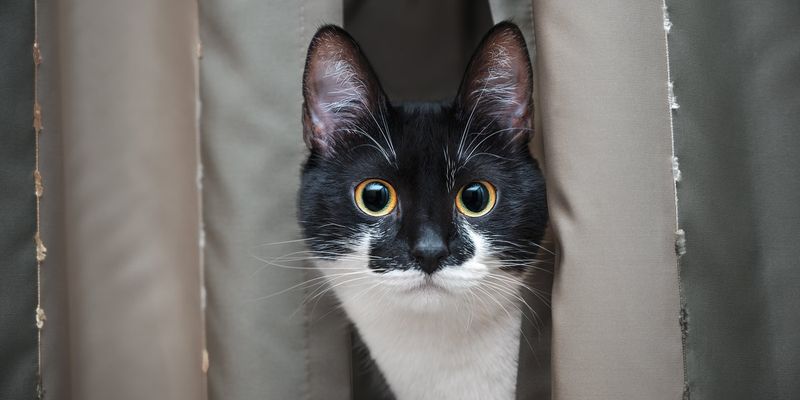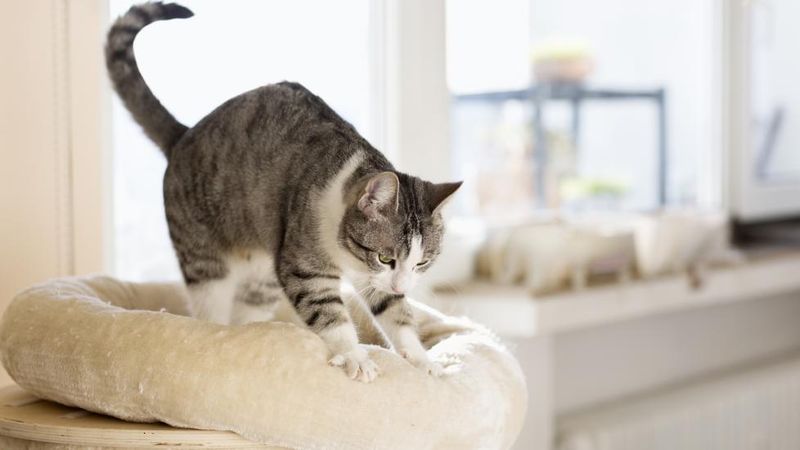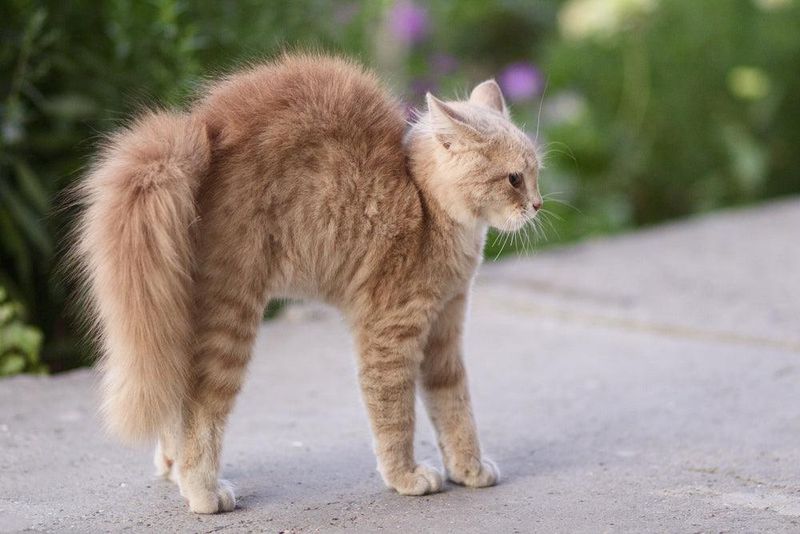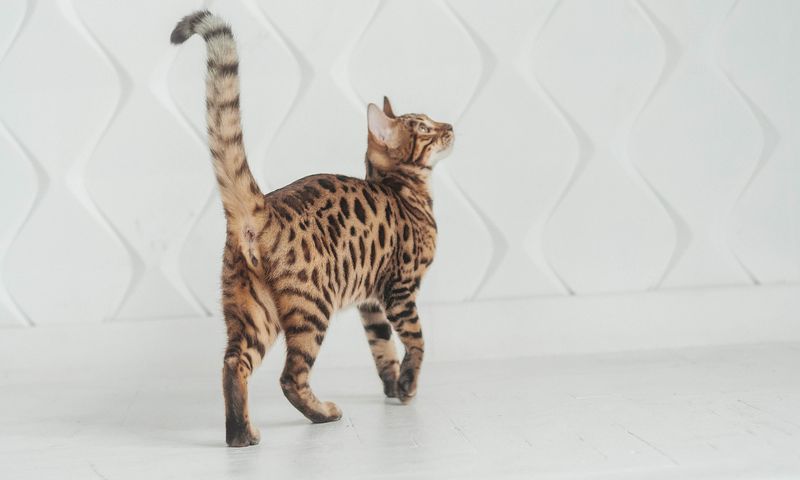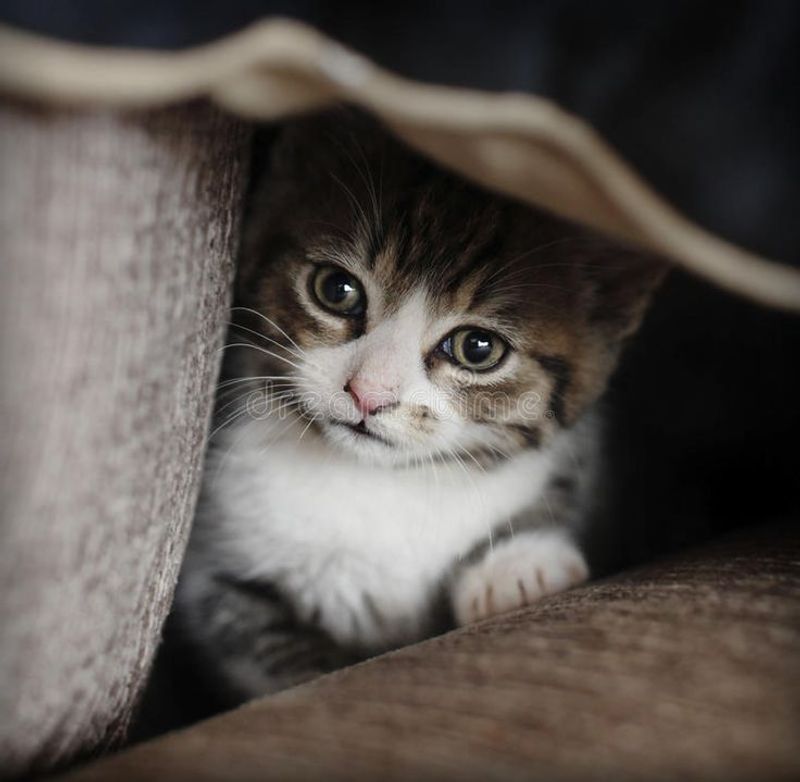📖 Table of Content:
Few creatures embody mystery quite like cats. With their graceful movements, calculated behavior, and an uncanny ability to spot things we humans miss entirely, cats approach the world with a unique lens of wonder. While dogs often react with enthusiasm or fear, cats engage the unknown with a blend of instinct, elegance, and strategic caution that can be both entertaining and enlightening.
Whether it’s a new box on the floor or the faintest rustle under the couch, unfamiliar sights, sounds, or scents can set off an entire chain of behaviors in felines. Curiosity may have its risks, but for cats, it’s a biological imperative—one that drives them to explore their environment in deeply complex ways. Each movement, vocalization, or expression they display in the face of the unfamiliar offers a glimpse into their rich inner world and survival instincts.
In this article, we’ll explore ten fascinating behaviors that cats exhibit when they encounter the unknown. From their deliberate freeze-frame moments to their zooming bursts of energy, these reactions reveal not just curiosity, but also deep intelligence and adaptability. If you’ve ever wondered what’s really going on in your cat’s mind when they sniff, stare, or scatter, you’re about to find out.
1. Freezing in Place
Rather than charging forward, cats often stop entirely when faced with uncertainty. In nature, this behavior helps them avoid becoming prey or alerting potential danger. Their muscles stiffen, ears perk up, and pupils widen as they analyze the situation in silence. Notably, this pause can last several seconds to minutes, depending on how threatening the stimulus appears. Observers may think the cat is doing nothing, but it’s actually calculating its next move with great precision. During this frozen state, the cat is listening, smelling, and watching simultaneously. What seems like hesitation is actually a strategic stillness born of instinctual wisdom.
2. Ears Twitching or Swiveling
Without moving their bodies, cats can gather a wealth of information by rotating their ears. These mobile structures act like satellite dishes, picking up sound cues from multiple directions at once. Even when a room appears silent to us, cats can detect ultrasonic noises like rodent movement or subtle mechanical vibrations. Each twitch or pivot reveals that the cat is triangulating the source of the unknown sound. Occasionally, one ear may rotate while the other stays still, showcasing their ability to focus auditory attention in specific ways. This fine-tuned response allows them to prepare for flight, fight, or closer inspection. In moments of suspense, their ears serve as both shields and sensors.
3. Sniffing Intensely
Upon encountering something unfamiliar, a cat’s first instinct is to engage its most powerful sense: smell. With nearly 200 million scent receptors, cats use their noses to create mental maps of their surroundings. Slowly and deliberately, they may approach the object, lowering their head for a close-range sniff. Every breath they take pulls vital information into their vomeronasal organ, also known as the Jacobson’s organ. This process tells them if the unknown item is living, edible, threatening, or part of another animal’s domain. Often, cats will pause mid-sniff, raising their heads in a trance-like state as they process the scent deeper. This sniffing ritual is not just about curiosity—it’s a form of data analysis unique to the feline world.
4. Cautious Pawing
Curiosity doesn’t always lead to boldness—sometimes it leads to testing the waters one paw at a time. Gently, and often hesitantly, a cat will extend a paw toward the unfamiliar object, ready to pull back at a moment’s notice. This pawing behavior is their way of probing texture, movement, and potential danger. You might see claws unsheathed briefly, just in case a defensive reaction is needed. After the first few taps, the cat might circle the object or tap again with increased confidence. Through this cautious approach, cats learn without overcommitting to a potentially risky interaction. Each paw movement tells a story of survival rooted in centuries of instinct.
5. Puffed-Up Fur and Arched Back
A sudden puff of fur and an arched spine are some of the most iconic cat responses to a perceived threat. This dramatic display is not aggression—it’s defense. By making themselves appear larger, cats aim to ward off danger without engaging in physical confrontation. The tail usually balloons out as well, held high or fluffed horizontally. Even the bravest cats may display this behavior when something startles them. The pose often lasts only a few seconds, quickly dissolving if the threat disappears. But in that brief moment, your cat is embodying a full-body alarm system honed by evolution.
6. Low Growls or Hissing
Sound is one of the ways cats create boundaries when they’re feeling overwhelmed. A hiss can be sharp and sudden, a signal that says, “Back off now.” Growls, on the other hand, are deeper and more prolonged—often a warning before escalation. When faced with something unknown and frightening, cats vocalize to both assert dominance and express discomfort. These sounds are usually accompanied by defensive body language, such as flattened ears or bared teeth. Owners may misread these noises as hostility, but they are expressions of fear and caution. Each hiss or growl is a cat’s way of managing unfamiliarity on its own terms.
7. Sudden Zoomies
Just when things seem calm, a cat might erupt into a burst of frenetic energy. These “zoomies,” or frenetic random activity periods (FRAPs), are a sudden release of adrenaline built up from cautious exploration. Often triggered by overstimulation, cats will race through rooms, leap off furniture, and sprint in wide arcs. It’s a natural stress relief mechanism that helps them shake off uncertainty. While it may seem like they’re fleeing an invisible ghost, they’re actually processing the unknown through movement. Once the zoomies fade, cats usually resume calm behavior as if nothing happened. This high-speed dance is curiosity turned kinetic.
8. Tail Twitching
Watch a cat’s tail and you’ll learn volumes about its mood and mindset. When the tail begins to flick, thump, or twitch, it’s often signaling internal conflict. An unfamiliar stimulus might intrigue the cat while also making it uneasy. The tail becomes a barometer, oscillating between interest and tension. Some cats twitch their tails just before pouncing—others do it before leaving the room altogether. Unlike dogs, tail movement in cats isn’t usually a sign of joy. It’s a visual language that tells us exactly how they’re evaluating the unfamiliar.
9. Hiding or Retreating
Instead of confrontation, many cats prefer to observe the unknown from a distance. Hiding under furniture, behind curtains, or inside boxes gives them a safe vantage point to assess a threat. This response is particularly common in shy or newly adopted cats. The moment they feel the unfamiliar has passed or become less threatening, they may cautiously reemerge. Hiding isn’t cowardice—it’s a calculated survival tactic. Within that hidden space, they can analyze scents and sounds without risk. It’s where safety meets strategy.
10. Dilated Pupils and Wide Eyes
Lastly, the eyes offer a striking visual cue of feline curiosity and alarm. When pupils dilate dramatically, it means your cat is aroused—either by excitement or anxiety. Wide, unblinking eyes signal deep concentration or fear, depending on context. In low light, dilation is natural, but in daylight, it’s often emotional. The eyes may dart quickly, watching for any motion that can reveal intent. Combined with other body language, dilated pupils complete the cat’s investigative toolkit. What we see as expressive eyes are, in reality, finely tuned instruments of perception.

